Subject covered in this blog will grow and expand, and may get included into the book eventually. This post is made after transcribing around 3,000 records and going back for some error correction and cleaning up of the data so far transcribed.
I look up at the statistics offered by the service provider who hosts my tonu.org blog site where I put up the WordPress blogs, most of which has been to do with food security in general, and Glyphosate in particular in the recent years.
One of the statistics provided is for me to see which area of the world had people that liked looking into and reading my blogs in the last few days. I could even check more details such as which particular blog post was or had been read, or which devices were used (computer, tablet, or smart phone etc). This is how I came to know that quite a few folks actually look at my blog using tablets and smart phones, and not necessarily computers. This was a sort of revelation for me, since I personally find a smart phone too small to read blogs. However, I understand that the so called smart phones are becoming very powerful and versatile gadgets where the “phone” service is only one part, and that there are increasingly more number of people that use just one device, such as a smart phone, for all their needs including browsing the net.
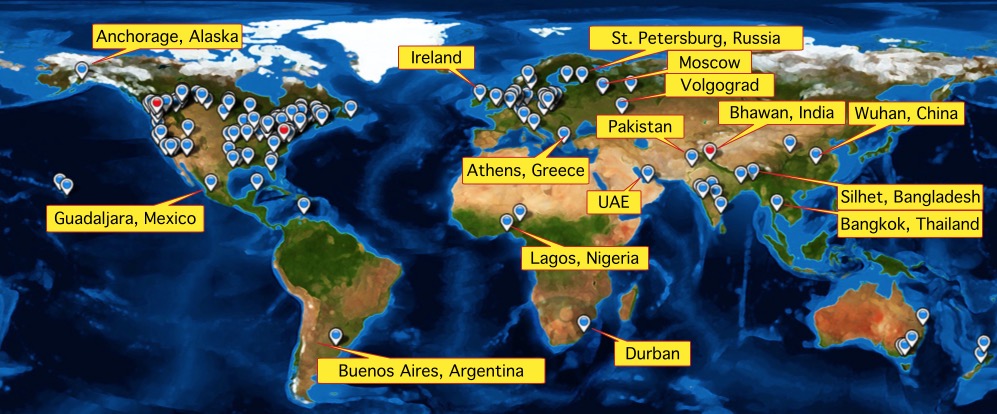
Who in the world is reading about glyphosate in Canadian food?
I also take note when folks from uncommon places, or places that do not seem to have heavy readership in the past look into my blog,
Russia had been an interesting cast. First, English is perhaps not the major language folks read or speak, though things are perhaps changing, and penetration of english as an international language is creeping into Russia as well. Also, Russia is largely a promoter of clean food. It has justification in being suspicious of the toxic agricultural technology coming out of the US. Also, a very large part of the total Russian food supply comes from home grown food – I think to the tune of some 40% or so. In other words, small farmer and home grown food is deeply enmeshed into the Russian culture. I feel this is a very good thing, in light of what is happening in the west with regard to industrially grown and processed stuff that goes in the name of food.

Clean Food exporters to Canada
And since my blogs mostly deals with the toxicity issue in industrial food systems that Russia appears to be wary of, and since my blog is invariably in English, I did not expect heavy readership from Russia, and am not surprised to see few hits from there.
However, I do see a persistent interest from the area of the three major Russian cities from the west – St. Petersburg, Moscow and Volgograd. These three names are sort of deer to me because of a different reason – I have been fascinated by Russian resistant to German invasion, and in particular the battles for Moscow, Leningrad, and Stalingrad. Hitler lost all three of these battles, but the carnage and hardship endured by people in Leningrad (Ex Petrograd and todays St. Petersburg) as well as Stalingrad (today’s Volgograd) is unimaginable. This also confirmed to me that the Russian character (and not necessarily their past communist regime) has a fierce sense of patriotism and ability to withstand unimaginable hardships in order to endure and keep their nation from foreign subjugation. This is also borne out in the previous western invasions into Russia going back to the time of Napoleon.
I had read a vast number of books, of German, Soviet Russian, American as well as post Soviet Russian versions of the battles and the history continues to amaze me, although I abhor wars in general, I find the essence of the Russian character under stress to be something to learn from.
And so, when I see hits from these cities, two of which have changed their name after the end of Communism. They removed Lenin from Leningrad and gave back the original name, St. Petersburg. I am however, a bit confused about this. I know the town was founded by the Tzar Peter the Great of Russia and was named after him as Petrograd. However, the current name – St. Petersburg, implies it is named after a saint. Peter the great was a tzar, and although he is called Peter the great, he was a mortal and not a saint. So who is the current town named after?
Then, in random order, comes two areas from Africa. Africa has not been a place where my blog generates interest. Therefore I was happy to see Lagos, Nigeria, being one dot on the map. And there has been relatively consistent interest from South Africa, from towns such as Durban.
Regarding Alaska, I can make a faint guess as who it might be, since I had a recent exchange with someone there that has an interest in the subject of Glyphosate in food.
I noted Guadalhara, Mexico for two reasons. First, I find the name so charming – Guadalhara. I wish I knew what it meant and where the name originates from. The second reason is, Mexico is the only country in North America that provided consistently high quality food to Canada with virtually no glyphosate. I am preparing a fresh blog on countries that exported food to Canada, where the number of samples tested by CFIA is larger than a minimum of 40, and where the average glyphosate content per sample is less than 5 parts er billion.
Mexico tops the list with a few others, and stands like an exceptionally shiny example for North America, since the other two in the continent – Canada and USA go to the bottom of the pile as the countries that have the most toxic foods on average, with regards to glyphosate.
I am not yet ready for the blog since I have to delve into some specifics of which kinds of food are imported into Canada from these cleanest suppliers (of which there are a few more besides Mexico) and if there is something to be learned from that for the consumers.
Also, I made a sort of temporary halt to further transcriptions as I found some errors in the records between records 2,500 and 3,000 and decided to go back there with a magnifying glass and clean it up instead of leaving it for later. I did managed to clean most of it off, but lost some data in the process and am re-entering them, and feeling better for having done it this way.
Anyhow, on to the hit list map.
Buenos Aires, Argentina flashed up recently. I do not have much contact with folks there, but find the name Buenos Aires, very charming and understand that is means “good air” or something like that. Lovely !
I am very aware of the devastation going on with regard to industrial level growing of RoundUp ready GM soy in the pampas, where aerial spray of the chemical is suspected to be causing serious birth defects in the villages where the indigenous (first nation) people stay, and how laboratory tests in Buenos Aires conducted on flog embryo by subjecting the mother frogs to corresponding levels ( corresponding to body weight) of glyphosate resulted in comparable birth defects of the similar type that are being found in the newborns in the Pampas villages.
I am aware of the fact that most of this soy goes to China, for production of soy based food, which would have made me suspicious of the foods the Chinese are eating. However, the Chinese foods imported into Canada and tested by CFIA turns out to be very clean. This is another puzzle that I intend to dig into later. It is possible that Canada is not importing the toxic kinds of Chinese food, which may be left for the Chinese consumers. However, it also raises a second question – where do the Chinese restaurants in Canada get their soy sauce, or tofu from?
All these made me notice the spot – Buenos Aires, on the map.
Canada and USA has always been heavy readers of the blog, and the dots are so closely packed that I often cannot pick out unusual towns and villages from the map, exceptions aside, like Alaska.
Likewise in Europe. However, I have seen an increased level of interest of late from countries such as Poland. And today, I noted a repeat visit from Scandinavia, Ireland and Greece.
In Asia, India is a consistent visitor to my blog. Even then, I managed to pick up a new name – Bhawan, in the Himalayan foothills not far from Delhi.
Sihet in Bangladesh, Bangkok in Thailand, and Wuhan in China caught my attention. Thailand should be equally pleased with my next blog, since that is one more great country whose foods have been tested by CFIA coving a large sample base and found to be remarkably clean with respect to glyphosate poisoning.
From the middle east there has been some sporadic interests, often from Israel. This time UAE shows up.
That about sums it up with the blog hit map for today, as I ponder into the details of the few countries that so far seems to export very clean food to Canada, with regard to glyphosate poisoning.
Thanks for reading. Comments welcome.

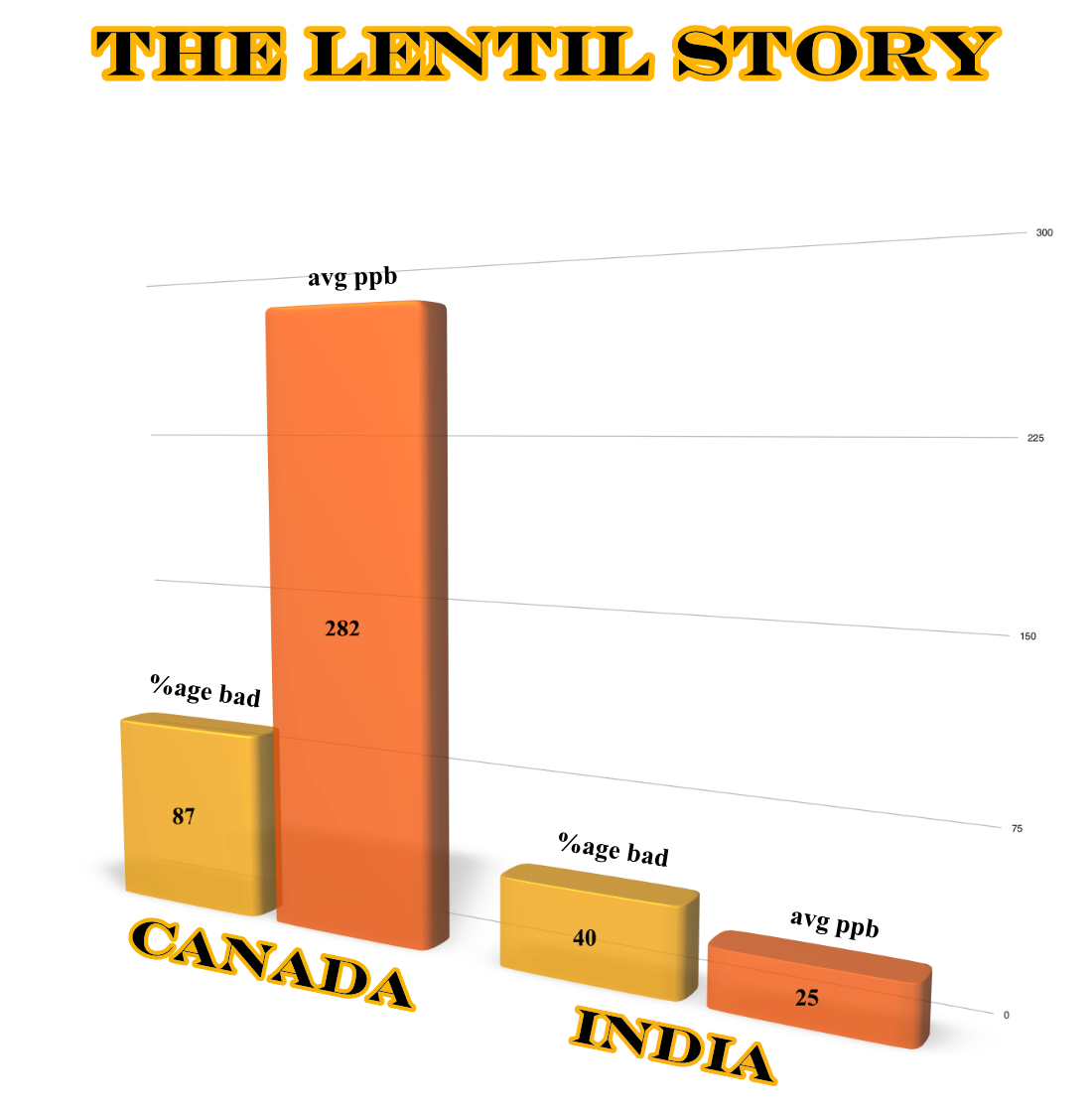

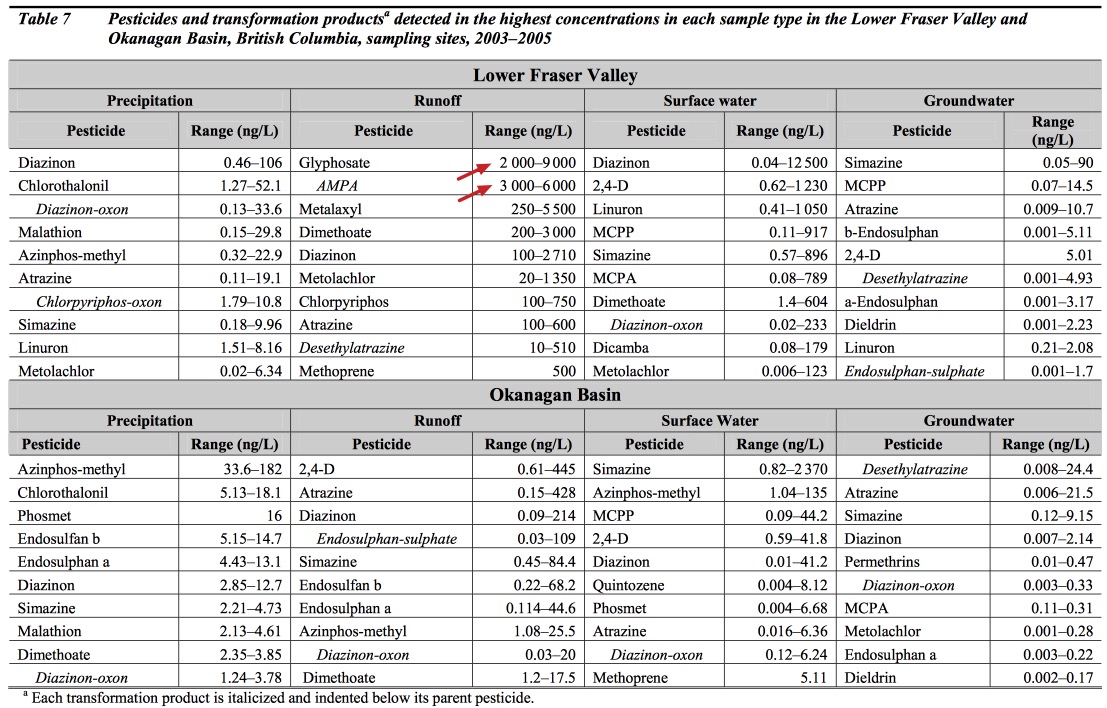

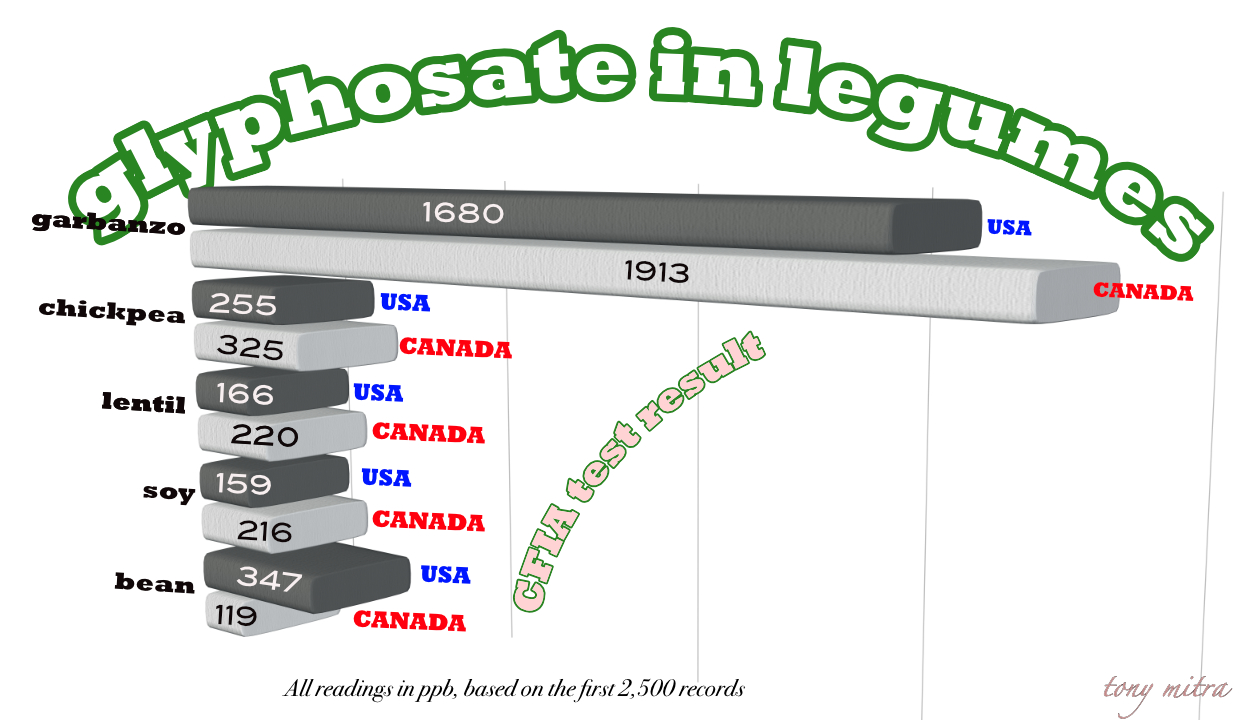
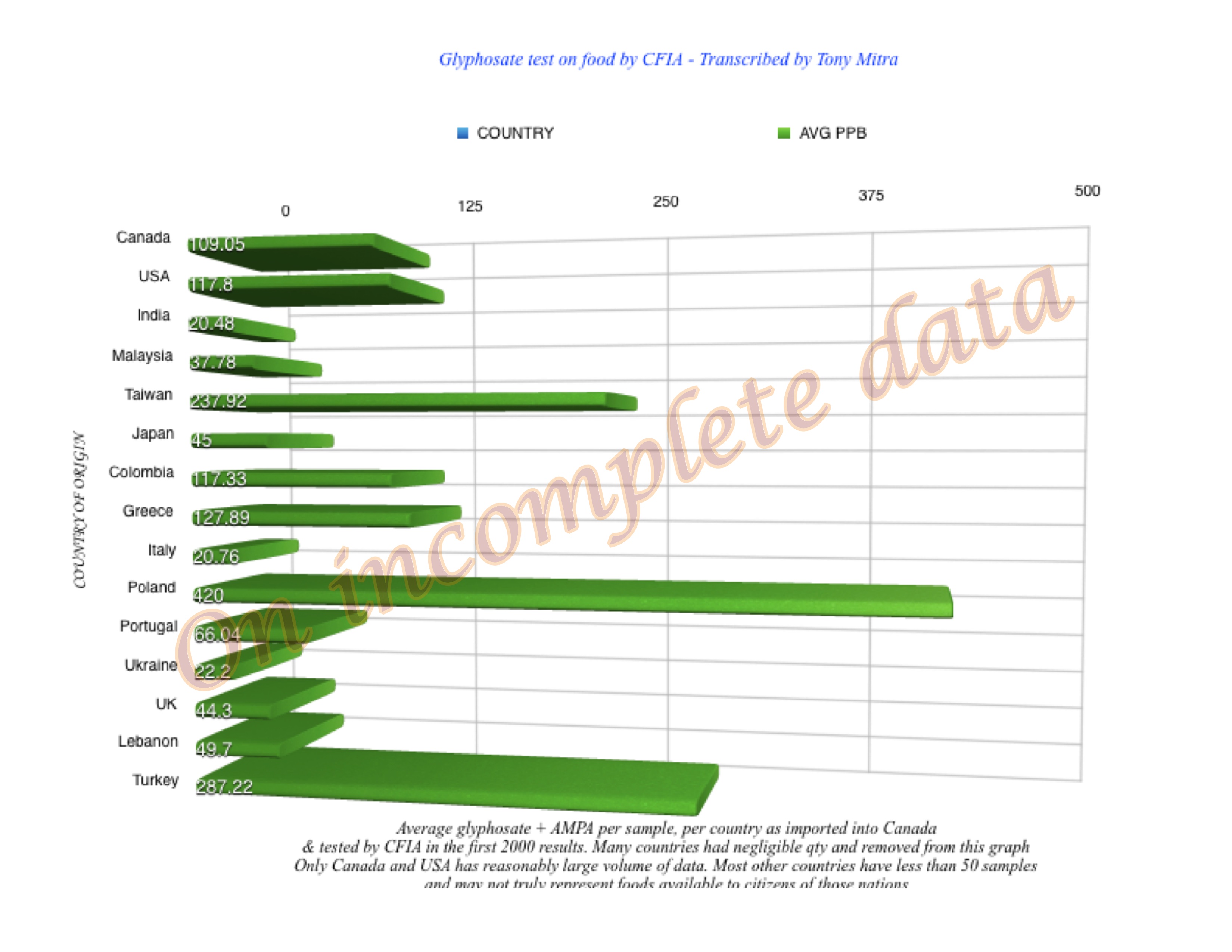
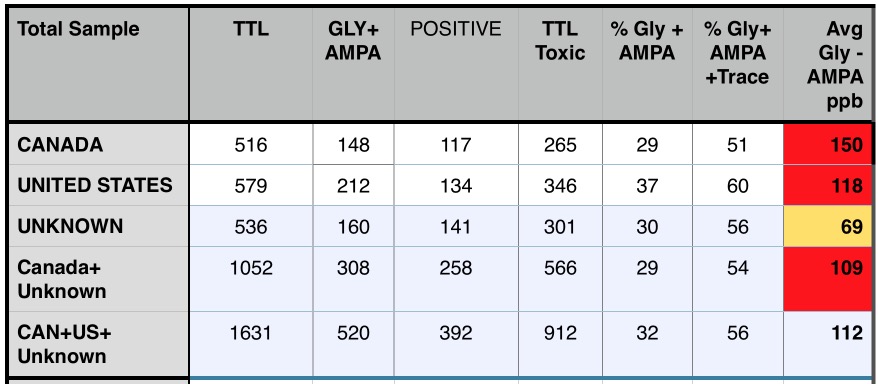







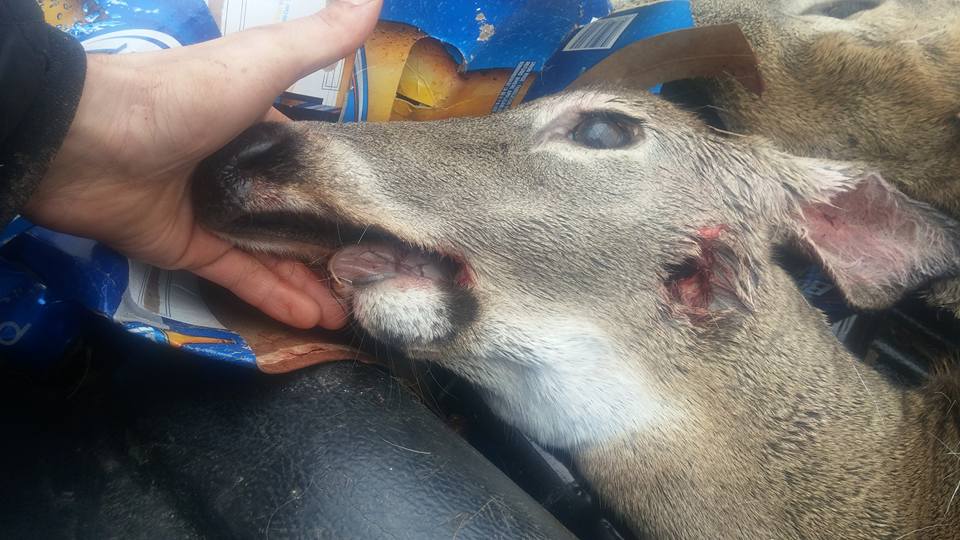

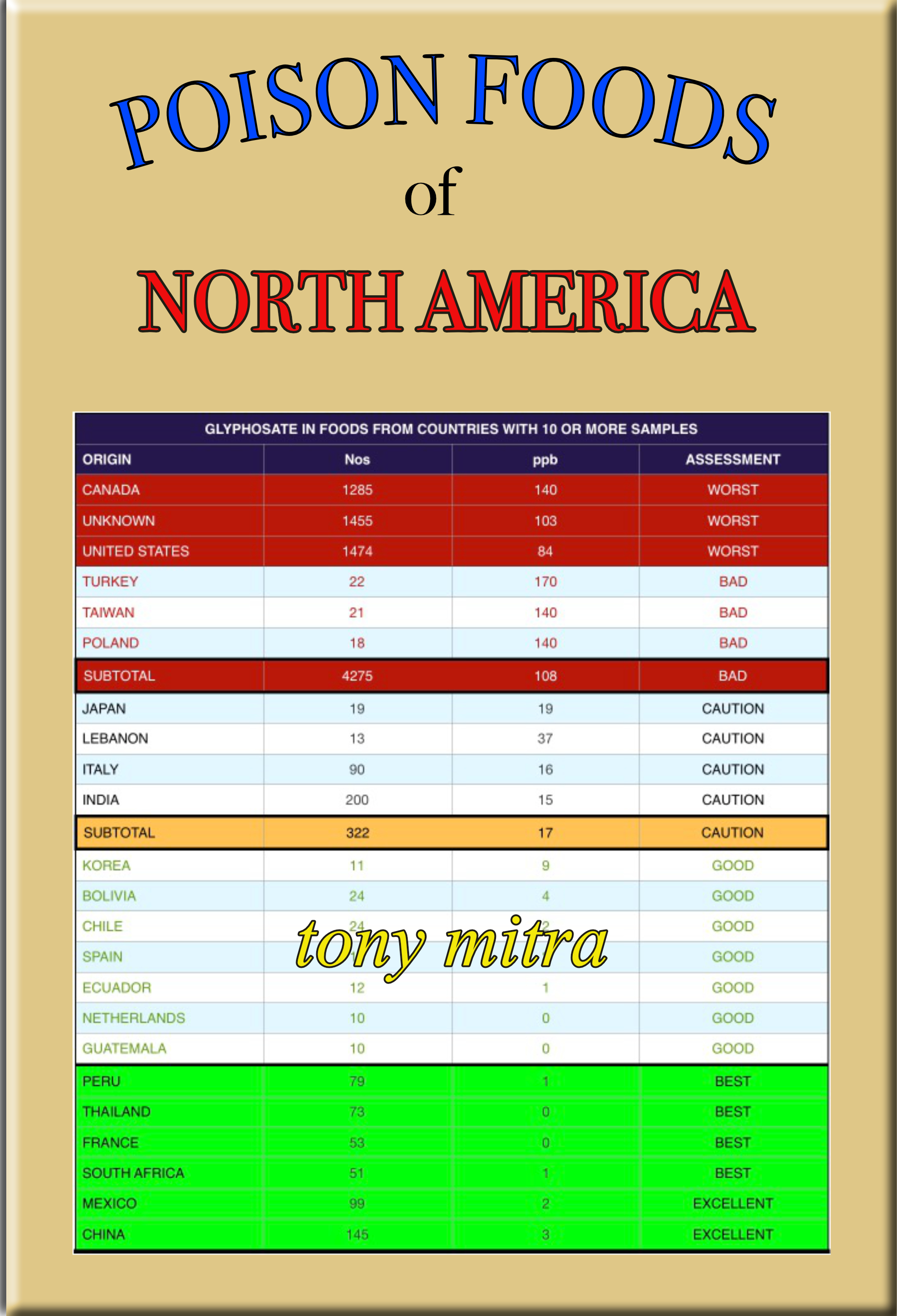


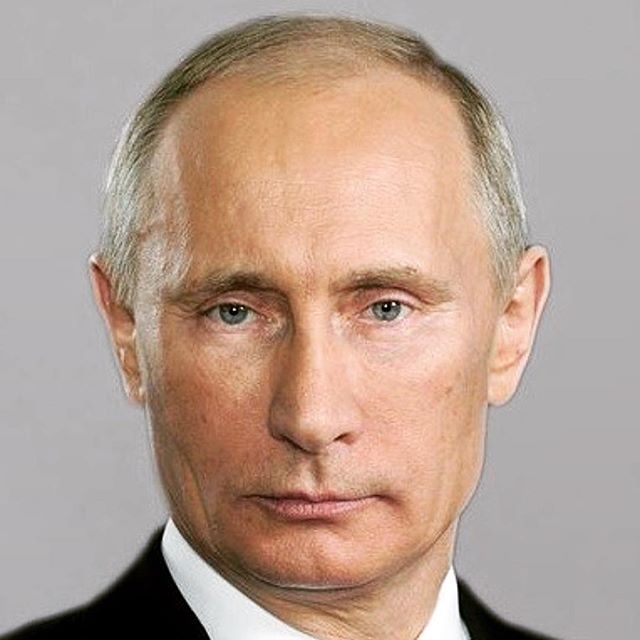




 Anyhow, I wished to preserve this piece of information, not only because it deserves to be in the general body of information attached to the petition, but also as a blog and perhaps a near future book of essays, on my experience as a food security activist, and the journey of trying to push back from the toxic avalanche we are all subjected to.
Anyhow, I wished to preserve this piece of information, not only because it deserves to be in the general body of information attached to the petition, but also as a blog and perhaps a near future book of essays, on my experience as a food security activist, and the journey of trying to push back from the toxic avalanche we are all subjected to.
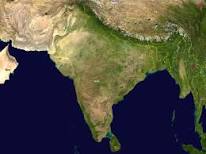 among other things. Although a harassment, and likely to cause a sort of recession temporarily in the economy, he did not think this was going to greatly hurt India.. just another example of the rich and powerful politicians doing stupid things.
among other things. Although a harassment, and likely to cause a sort of recession temporarily in the economy, he did not think this was going to greatly hurt India.. just another example of the rich and powerful politicians doing stupid things.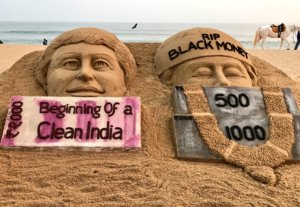 Yes, there are long lines of folks trying to change their money. However, there has not been a single riot in protest, in a country where riots happen at the drop of a hat, and are kept out of media as far as possible. Here, some of the media has been caught on cell phone camera urging folks to show their disappointment in more forceful manner, and asking why they are not angry and protesting it etc – and in almost all cases, the people in the line have shooed these media people away.
Yes, there are long lines of folks trying to change their money. However, there has not been a single riot in protest, in a country where riots happen at the drop of a hat, and are kept out of media as far as possible. Here, some of the media has been caught on cell phone camera urging folks to show their disappointment in more forceful manner, and asking why they are not angry and protesting it etc – and in almost all cases, the people in the line have shooed these media people away.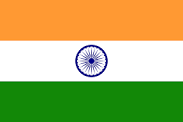 Some small store-wallah are lamenting that their business this month will suffer at least a 20% slow down, and yet are supporting the idea for the hope that bribery will reduce if not be eradicated.
Some small store-wallah are lamenting that their business this month will suffer at least a 20% slow down, and yet are supporting the idea for the hope that bribery will reduce if not be eradicated.